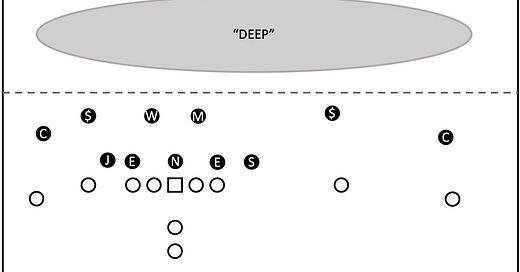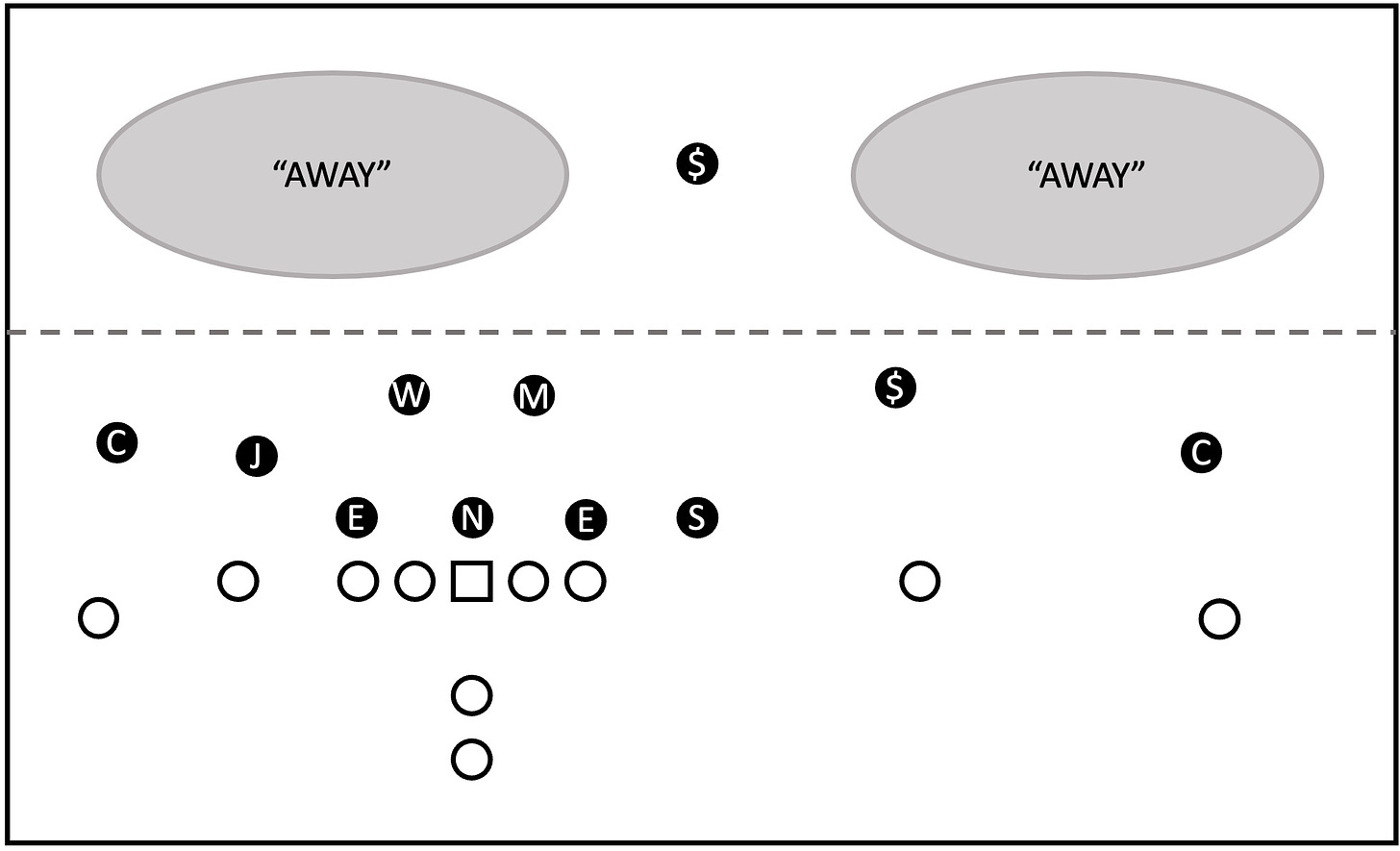One word.
Or maybe two words.
That’s where we have started in teaching our quarterbacks about coverages this offseason. I’ll explain how later in the article.
Our spring football starts tomorrow, and all the progress that we think we’ve made in the offseason will reveal itself over the next 20 practice days.
As we install the offense, it’s not just enough for the quarterback to learn what we do. He also needs to know WHY we do what we do.
To gain control of the offense, the quarterback must gain control of the defense. He must know who he’s looking at and what the indicators are for him to make decisions.
This year is my first year just coaching quarterbacks, and I’m really excited for the focused assignment. Part of my learning to prepare for the job this offseason has been to study how to teach coverages.
So today, let’s talk about learning to teach coverages.
What are coverages?
We define coverage as “how defenses defend the pass.” It’s simple, but I like to define everything. Defenses will do this by placing a certain number of defenders deep. We use the hard deck (8 yards past the LOS) to determine how many defenders the defense is committing to defend the deep zones. We name coverages by the number of defenders they put deep (for example, Cover 1 means that they have 1 deep defender).
To categorize coverages, we also teach Middle of the Field Open or Closed. The reasoning behind that is simply to give the quarterback connections between the coverages.
Starting with the basics
Coverages can be anything these days. There’s good ol’ man coverage, there’s spot drop zone coverage, and then you can start to combine those into man-match or zone-match coverages. At the moment, we’re not teaching the recognition of matching coverages.
In my opinion, high school zone coverages are often just “delayed” man coverages (at least what we see). The linebackers might be dropping to a spot, but the DBs want to play man. Once you enter their zone, they’re on you. This might sound like zone-match, but I have no idea what they teach at the other schools.
So, all that to say, the coverages I’m going to go over below are in their most basic looks against a 2x2 formation. Our goal first and foremost is to know the weaknesses and then get a good feel for how our concepts interact with each coverage.
Basic Coverages
We are teaching coverages with a distinct emphasis on their weaknesses through one or two words. These words are taken directly from Dub Maddox’s R4 System and method for teaching coverage weaknesses to QBs. The comments before the picture are the brief introduction I have given to the quarterbacks this offseason.
Recognizing and making decisions based on coverage will be new to all of them this spring, so my focus is making sure they know where we want to attack and with what concepts. I also want them to begin to get a “feel” for the shape of the defense and where the ball “should” go.
To do this, we are teaching the quarterback to come up with his best guess as to where the ball should go pre-snap. He will loosely commit to this decision post-snap.
We are going to really emphasize this best guess as a tool to help the quarterback build the ability to anticipate. If we can teach him how to learn what to look for, he can (hopefully) start to learn how our concepts interact with coverages.
So, here’s an overview of each coverage and it’s weakness:
Cover 0
Or “blitz coverage.” Cover 0 is either a compliment or an insult. Why is a team sending everyone at you? Because they don’t think you can throw it or because they don’t know what else to do but bring the house?
For the quarterback, it’s simple:
“See Cover 0, be the hero.”
Cover 1
Cover 1’s one word weakness is simply “away” from the middle of the field safety. We’ve got to either be faster or more physical than the underneath DBs to get deep, or we’ve got to have rubs in the concept.
Also, getting the ball to the back is not a bad idea if the defense keeps an inside linebacker locked on throughout the down.
Cover 2
We must be able to hit the hole or the middle of the field consistently, and try to force the defense out of Cover 2.
Otherwise the 5 underneath defenders are going to suffocate our quick game and add too many hats to near the box for our run game to limit the effectiveness of the run game.
Throw the ball with zip.
Cover 3
Attack the “seam” if they don’t carry, attack under the “seam” if they do.
Also, any ball fake will help us open up crossing routes and other in breaking routes.
We love play fakes versus Cover 3!
Cover 4
There are ways to attack deep against Cover 4 (think double post to hi-lo one of the safeties), but the flats are right there for the taking.
Let the short route (and the running back) be your friend. Let them come down and make tackles.
What’s next?
I don’t know.
We start spring practice tomorrow, so we’re going to learn a lot about the effectiveness of our teaching over the next month. I’m excited to see what happens and learn to coach better. I know what we’ve done isn’t perfect, so there is plenty of room to optimize.
Share in the comments below how you teach your quarterbacks coverages — I’m always curious to see how others do it.
Until next week,
Emory








